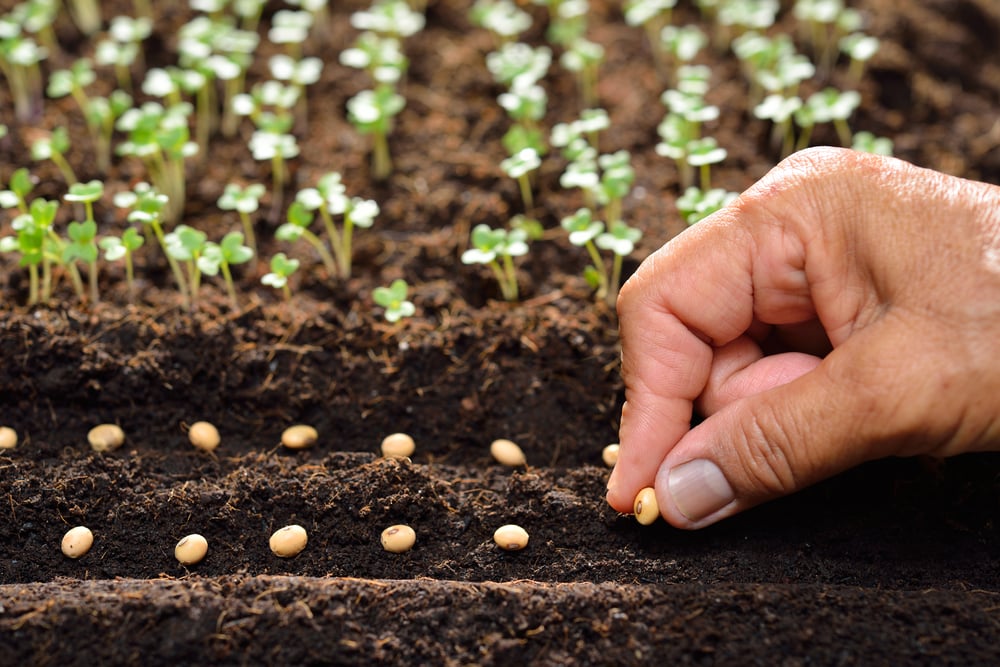
In order to be able to grow crops or vegetables, a person must first plant its seeds. Each crop has its own unique seed. If you are interested in the process of growing seeds, you may get overwhelmed by the number of different seeds available.
While determining the type of seed that you need to buy, you may have come across two different categories of seeds. One of these seeds is microgreen seeds, while the other ones are regular seeds. Most of the seeds that you may have seen may be labeled as either one of these seed categories.
Microgreen Seeds vs Regular Seeds
You may have wondered whether there is even a difference between a microgreen seed compared to a regular seed. But if there isn’t, then why are these two labeled completely different?
Using this article, we will be helping you out figure out exactly what differentiates a microgreen seed from a regular seed. We will be comparing microgreen seed vs regular seed which should help you determine whichever seed is the one that you should purchase. So, without wasting any time further, let’s get started!
Is There Even A Difference Between the Two?
For people asking whether there is even a difference between the two, the answer is yes. There definitely is a difference between microgreen and regular seeds. However, it is important to note that microgreen seeds do not refer to a “special” kind of seed.
In fact, you would be amazed to know that even an ordinary seed could be grown as a microgreen seed. This is why most people like to think of both as the same thing. But there are some key differences between a microgreen and a regular seed. It is also worth mentioning that even though there really isn’t a unique microgreen seed, there are some seeds that are preferred to be grown as microgreen seeds.
But then What Makes A Microgreen So Different?
You may get confused after knowing that almost any seed can be grown as a microgreen. The thing that makes microgreens so different from regular seeds is actually the method of growing the crop itself. In order to grow a microgreen seed, farmers use a special technique or method for cultivating.
This is why there are some seeds that better grown as a microgreen compared to some others. Hence, it does not matter much which seed you plan to buy. However, the main differences between growing a microgreen compared to the growth of a regular seed are as follows:
- Planting Process
During the process of planting, farmers and gardeners use a type of shallow container that has drainage holes occupied by a unique soilless mix. Before actually planting the seeds, the gardener water the mix in order to make it damp beforehand. Afterward, the seeds are closely planted together in the dirt.
- Growth Process
One of the biggest benefits of using a microgreen is that they germinate a lot quicker. Similarly, these microgreens mature around 10 days after germination (depending on the type of seed). This is one of the main reasons why people prefer using microgreens.
- Harvesting Process
Finally, when harvesting microgreens, they are cut through a pair of scissors right at the bottom part of the stems. For consumption purposes, only the leaves and stems of a microgreen are the parts that you should harvest.
Best Seeds to Plant as Microgreens
We have already mentioned how some seeds will grow better as a microgreen compared to others. However, it mostly comes down to what the individual prefers. Keeping in mind that you can use all regular seeds as microgreen seeds, the most common microgreens are Beets, Spinach, Arugula, Dill, Radishes, Herbs, and other types of grass.
In order to be able to determine what type of seeds are best grown as microgreens, you will only have to keep one thing in mind. Just pick a green with the most flavor that also does not require to be fully grown before harvesting.
The Bottom Line
Ever wonder the difference between microgreen seeds vs regular seeds? We highly encourage you to give this article a read. It has all the information that you need in order to be able to know the difference between the two.
